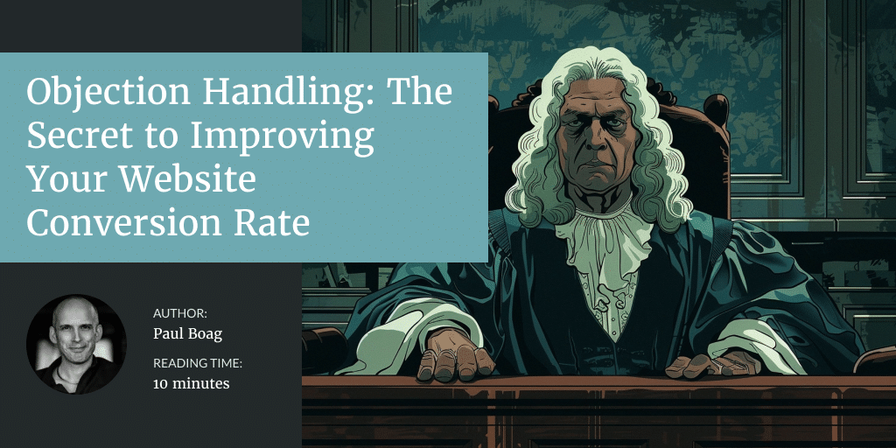Objection Handling: The Secret to Improving Your Website Conversion Rate

my notes ( ? )
If you work on websites, rather than web apps, the chances are you want people to do something on that site. It might be sign up for a newsletter, buy a product or getting in touch. Whatever it is you want people to do you will find them cautious. That is just human nature. We are always looking for the “danger” in any situation. People fear making the wrong decision or wasting their money. They worry about what will happen if they act and how things might go wrong.
Addressing Concerns is Key
You can have an amazing product, great design, and compelling content. But if you fail to address people’s concerns, they will hesitate to act.
Skills for Success
A vital skill when working on websites is the ability to address these concerns. Even if content creation is not your main job, you need to guide those who create content. Otherwise, you might end up receiving the blame if the website underperforms.
Objection Handling: A Life Skill
Objection handling is useful not only for creating websites but also in everyday life. You may need to persuade people to do something, whether it’s convincing a child to eat vegetables or getting a manager to approve your pay raise.
Identifying objections and knowing how to respond are valuable skills in many situations.
How to Identify Objections
So, how do you find out what objections your audience might have?
- Demonstrate empathy.
- Talk to those who know your audience well.
For example, to improve a website’s conversion rate, talk to the sales or customer support teams. They can help you understand people’s objections better.
Asking Your Audience
You can also ask your audience directly. I often run exit-intent surveys on landing pages to find out why people choose not to act. This feedback can provide valuable insights for improving the page and increasing the conversion rate.
Addressing Objections Head On
Once you know their objections, you can start working on how to address them. It may be tempting to ignore objections, but this rarely works. Addressing objections directly shows that you understand your audience. This approach not only addresses their concerns but also builds trust.
Preempting Objections
When speaking to people directly, it’s helpful to preempt objections. Don’t wait for them to raise issues. If you address their concerns before they mention them, they have the opportunity to remain silent. This means they will not lose face in front of others, something especially important with senior stakeholders. They really do not like being corrected by someone below them!
Responding to Objections on Your Website
On your website, link your responses to objections with elements that might trigger them. For example, if you’re asking for credit card information, reassure users about security at that moment. Don’t expect them to look for answers in your FAQ section!
Conclusion
There is much more to say about objection handling. I have just published a comprehensive post on my website that explores this topic in depth.
However, the reason I have raised the issue here is that objection handling is a crucial skill that anybody working in marketing or UX needs to know. In fact, it is a good skill to have no matter what your role. And yet, somehow it is not a skill you hear people discuss very often.
Read the Full Post
The above notes were curated from the full post boagworld.com/marketing/objection-handling/.Related reading
More Stuff I Do
More Stuff tagged content design , web design , user experience design
See also: Content creation & management